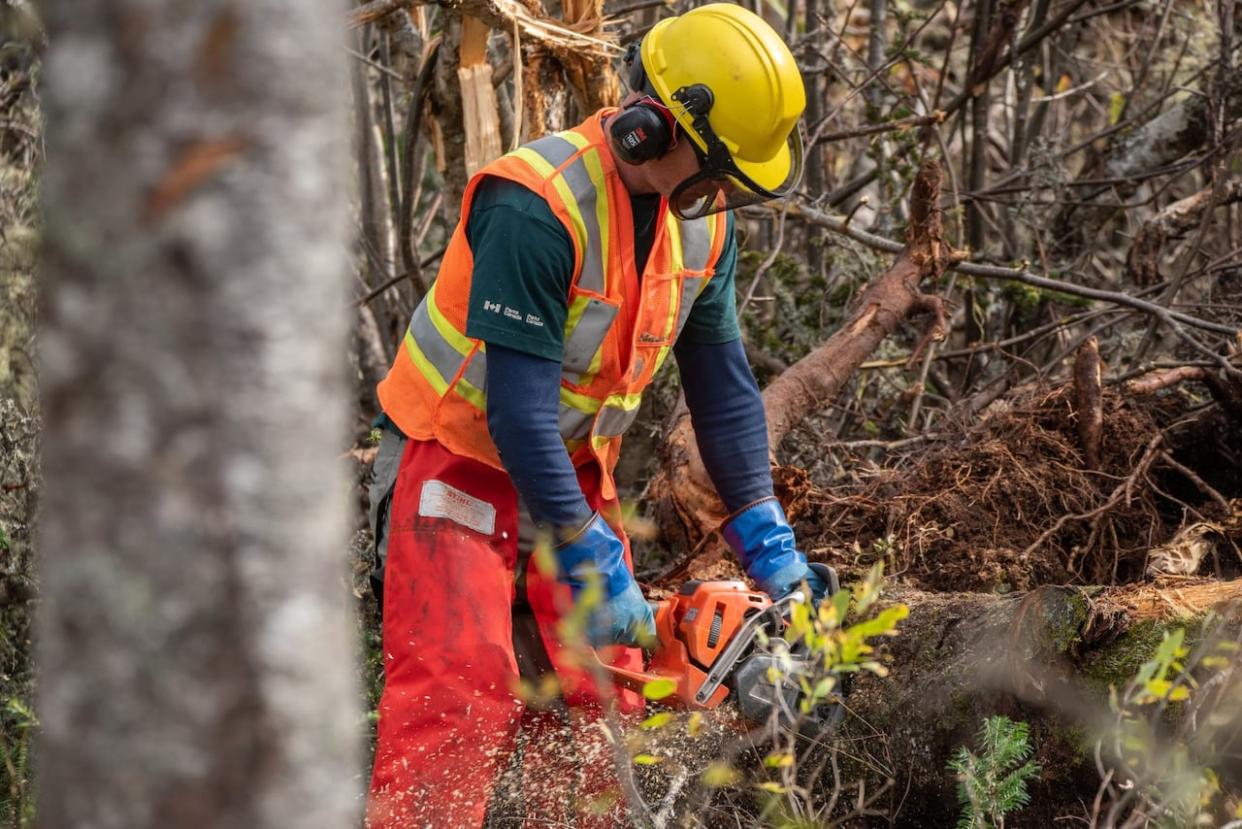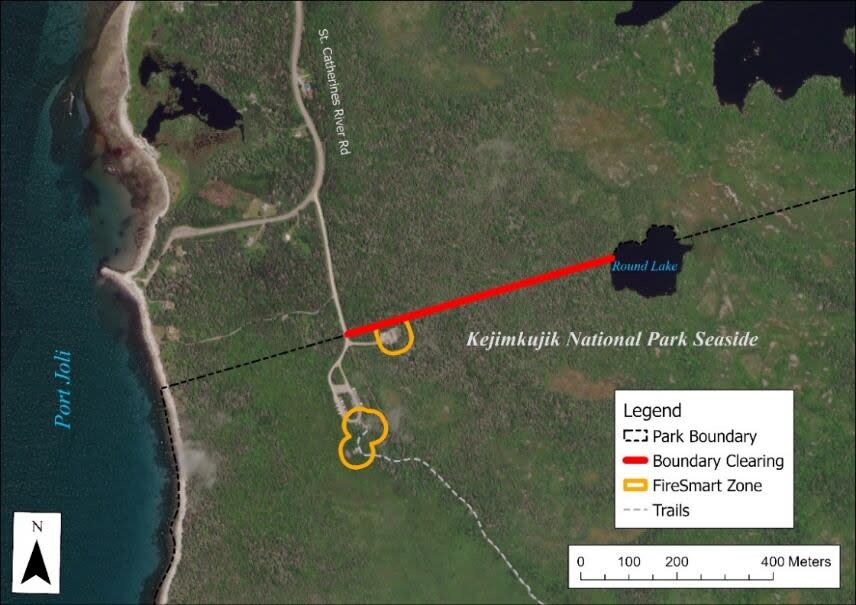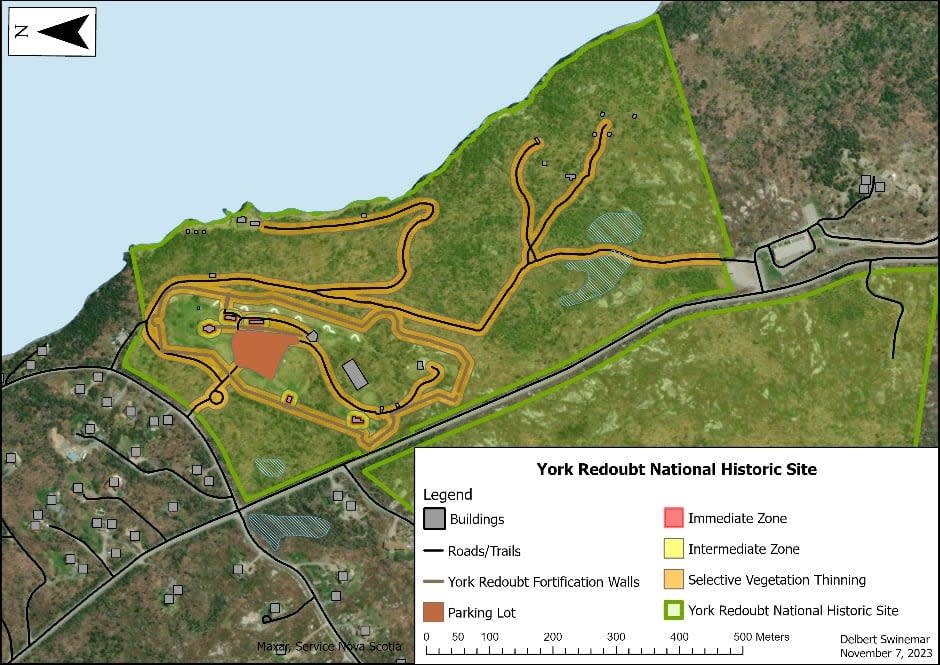Parks Canada works to reduce wildfire risk at two Nova Scotia sites after historic year

Wildfire mitigation work is underway at two of Parks Canada's Nova Scotia sites after fires devastated the province earlier this year.
Crews are clearing and thinning vegetation around buildings and trails at Kejimkujik National Park Seaside and York Redoubt National Historic Site.
"What we're implementing at these sites is helping to reduce the risk that forest fires will start and spread at these locations," said Andy Sharpe, Parks Canada resource conservation manager for mainland Nova Scotia.
More than 150 homes were lost in a wildfire that started in Upper Tantallon, N.S., just outside Halifax on May 28.
On the province's southwestern tip, about 60 homes and other structures burned in the province's largest wildfire on record, which broke out that same weekend and affected 23,525 hectares.
Parks Canada staff are implementing techniques drawn from the FireSmart program, which is a national initiative that helps Canadians increase neighbourhood resilience to wildfires.
At Kejimkujik Seaside, crews are clearing vegetation 30 metres around the buildings located near the park's main entrance and clearing regrowth along a section of the park's boundary line to provide access to a water source and create a fuel break.

Wildfire mitigation work at Kejimkujik Seaside is expected to be finished in November. (Parks Canada)

Wildfire mitigation work at the York Redoubt National Historic Site is expected to be finished in the new year. (Parks Canada)
Crews are reducing risk at the York Redoubt Historic Site by thinning 10 metres of vegetation around the main trails, 10 metres outside the boundary wall and thinning vegetation around the most-used and highest-valued structures at the site.
As climate change causes more extreme weather, Sharpe says, work like this might become more common.
"Seasonal variability and temperature and precipitation may well be our norm and we have to be prepared for wildfires anywhere in a fire prone environment and, for much of Nova Scotia, that's pretty much everywhere," he said.


